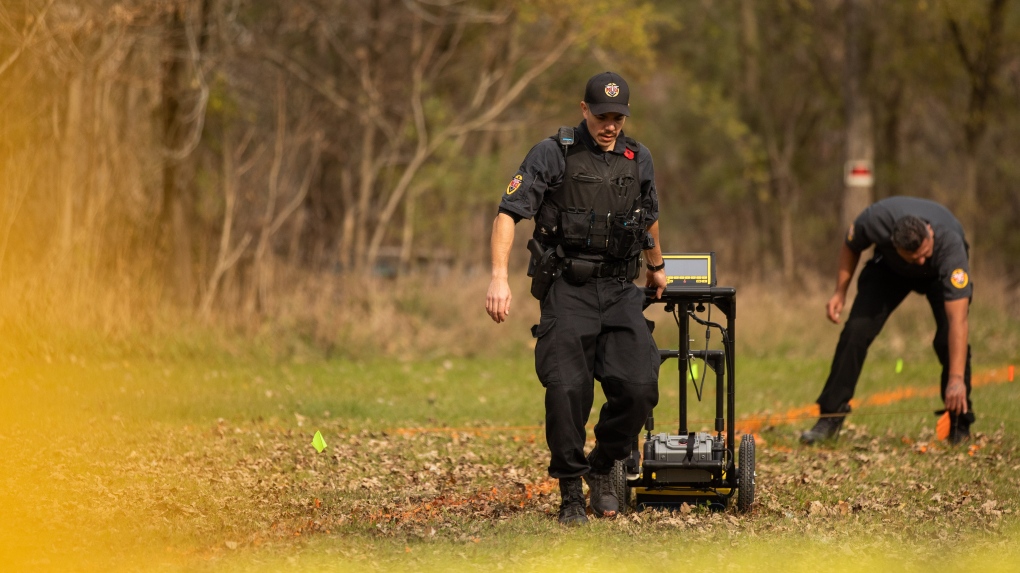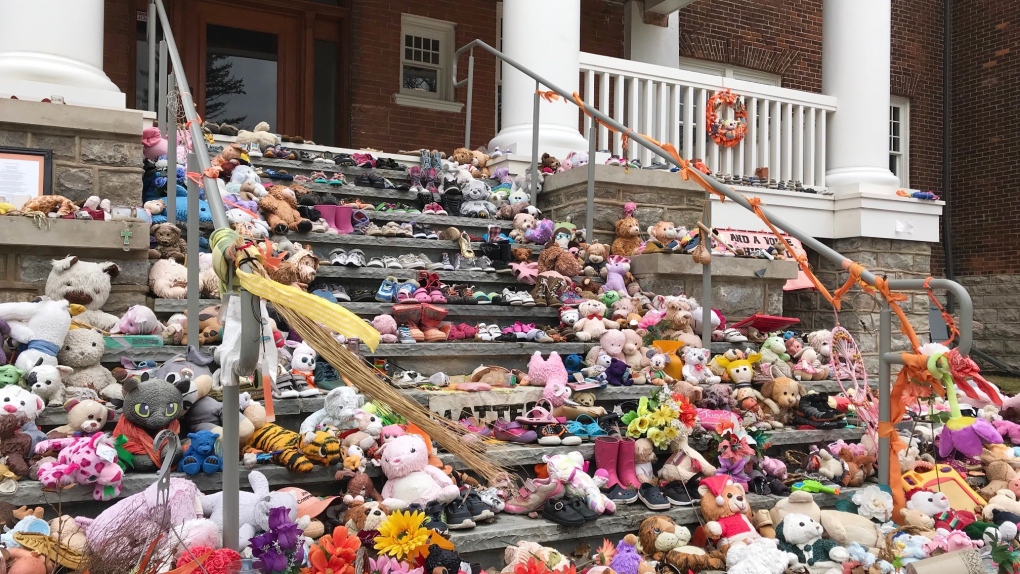Investigation at former Mohawk Institute in Brantford shifts from criminal to coroner-led
It’s been about a year and a half since the investigation began into what happened at a former residential school in Brantford, Ont., and now the focus is shifting from criminal to coroner-led.
The Mohawk Institute Residential School is considered to be Canada’s longest-running residential school. It was in operation from 1828 until 1970.
The goal of the search for unmarked graves is to help bring survivors one step closer to reconciliation.
The group, the Survivors’ Secretariat, said a coroner-led investigation will change the focus from placing the blame on individuals to creating opportunities for closure.
“A coroner investigation differs as its focus is on the victim, rather than the culprit,” the group said in a media release.
The group is hoping that this change will mean they will have more access to data uncovered with more resource sharing amongst the investigators and archival researchers.
HISTORY OF THE INVESTIGATION
The investigation in Brantford was launched shortly after hundreds of suspected unmarked graves were found at former residential schools in B.C.
In October 2021, a task force could be seen getting trained on the equipment. Ground penetrating radar was used at Chiefswood Park in Oshweken.
“It’s like a fish finder but for the earth,” said Arnold Jacobs with Six Nations Police, at the time.
The official search started a month later at the site of the former Mohawk Institute, now known as the Woodland Cultural Centre.
 Members of the Six Nations Police conduct a search for unmarked graves using ground-penetrating radar on the 500 acres of the lands associated with the former Indian Residential School, the Mohawk Institute, in Brantford, Ont., Tuesday, November 9, 2021. (THE CANADIAN PRESS/Nick Iwanyshyn)
Members of the Six Nations Police conduct a search for unmarked graves using ground-penetrating radar on the 500 acres of the lands associated with the former Indian Residential School, the Mohawk Institute, in Brantford, Ont., Tuesday, November 9, 2021. (THE CANADIAN PRESS/Nick Iwanyshyn)
In January 2022, the federal government committed to providing the team leading the ground search with $10 million over three years.
Last September, the survivors’ group said through records a total of 97 deaths were tied to the former Mohawk Institute.
The toll is more than double what the National Centre for Truth and Reconciliation initially reported.
“I think we can safely anticipate that we're going to continue to hear and see in the records that children died,” Laura Arndt lead of the Survivors’ Secretariat said last fall.
ONTARIO’S CORONER RESPONDS
Ontario’s Chief Coroner, Dirk Huyer, said their office has been working with Six Nations Police, Ontario Provincial Police (OPP), Brantford Police and the Survivors’ Secretariat since the beginning.
“The police had been leading the investigation,” he said. “The police are drawing their work to a close, and we’re continuing the work we’ve been doing to answer as many questions we can about the children that died.”
Huyer said their office will continue to work with the survivors group.
“To investigate the circumstances of death for any child that may have died,” Huyer said. “Our role as the coroner is to answer questions about who died, where they died, when they might have died, the medical cause and then where they might be buried.”
 (Dan Lauckner/CTV Kitchener)
(Dan Lauckner/CTV Kitchener)
THE NEXT STEPS
Huyer said the work they’re doing is important.
“Without understanding what occurred, it really impacts the ability to move forward from the trauma and the loss that occurred from the residential school system. So I believe this is a fundamental importance to many, specifically those in Indigenous communities,” Huyer said.
Huyer said it is unclear how long the rest of investigation will take and was unable to provide CTV News with a timeline.
But the survivors group said they expect answers soon.
“We look forward to the receipt of their final report, which is anticipated in the fall of 2023,” Arndt said.
CTVNews.ca Top Stories

Flights divert around western Iran as one report claims explosions heard near Isfahan
Commercial flights began diverting their routes early Friday morning over western Iran without explanation as one semiofficial news agency in the Islamic Republic claimed there had been 'explosions' heard over the city of Isfahan.
American millionaire Jonathan Lehrer denied bail after being charged with killing Canadian couple
American millionaire Jonathan Lehrer, one of two men charged in the killings of a Canadian couple in Dominica, has been denied bail.
Nearly half of China's major cities are sinking, researchers say
Nearly half of China's major cities are suffering 'moderate to severe' levels of subsidence, putting millions at risk of flooding especially as sea levels rise.
Prince Harry formally confirms he is now a U.S. resident
Prince Harry, the son of King Charles III and fifth in line to the British throne, has formally confirmed he is now a U.S. resident.
Judge says 'no evidence fully supports' murder case against Umar Zameer as jury starts deliberations
The judge presiding over the trial of a man accused of fatally running over a Toronto police officer is telling jurors the possible verdicts they may reach based on the evidence in the case.
Health Canada to change sperm donor screening rules for men who have sex with men
Health Canada will change its longstanding policy restricting gay and bisexual men from donating to sperm banks in Canada, CTV News has learned. The federal health agency has adopted a revised directive removing the ban on gay, bisexual and other men who have sex with men, effective May 8.
Colin Jost names one celebrity who is great at hosting 'Saturday Night Live'
Colin Jost, who co-anchors Saturday Night Live's 'Weekend Update,' revealed who he thinks is one of the best hosts on the show.
Sports columnist apologizes for 'oafish' comments directed at Caitlin Clark. The controversy isn't over
A male columnist has apologized for a cringeworthy moment during former University of Iowa superstar and college basketball's highest scorer Caitlin Clark's first news conference as an Indiana Fever player.
'Shopaholic' author Sophie Kinsella reveals brain cancer diagnosis
Sophie Kinsella, the best-selling author behind the 'Shopaholic' book series, has revealed that she is receiving treatment for brain cancer.
































